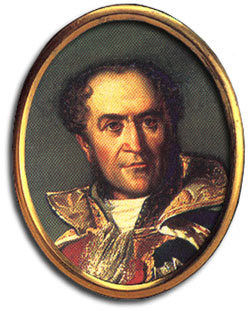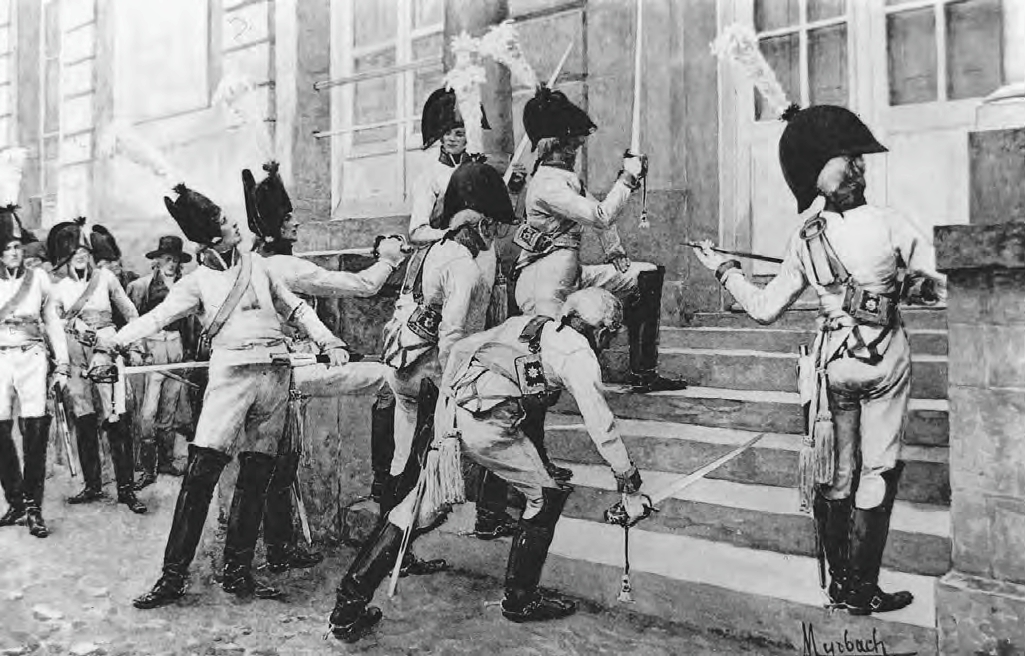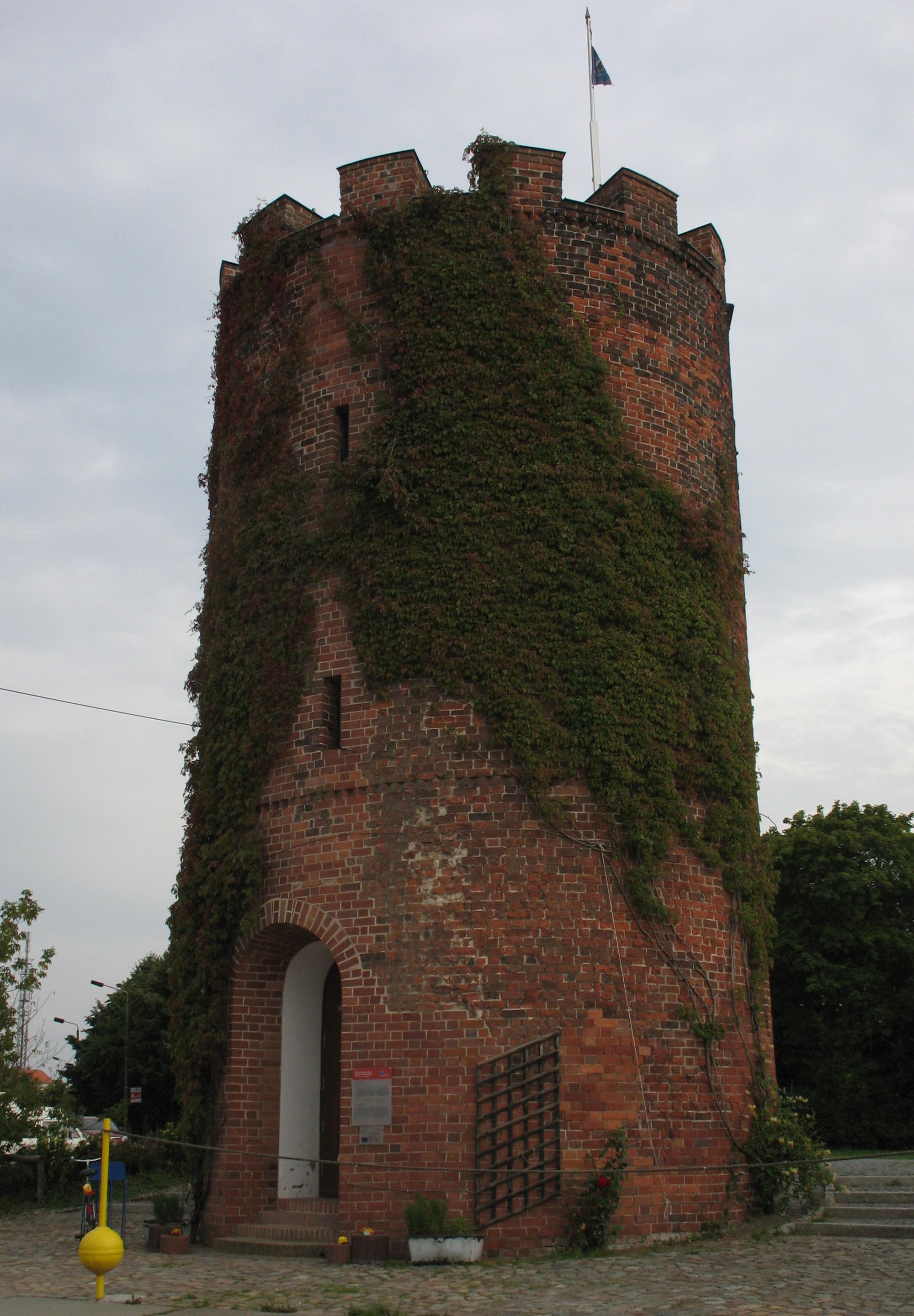|
Siege Of Stralsund (1807)
The siege of Stralsund lasted from 24 July to 24 August, 1807, and saw troops from the First French Empire twice attempt to capture the port city from Lieutenant General Hans Henric von Essen's 15,000-man Swedish garrison. Early that year, Marshal Édouard Adolphe Casimir Joseph Mortier blockaded the city for two months before he was called elsewhere. In his absence, the Swedes drove back the inferior blockading force. After Mortier returned and pushed Essen's troops back in turn, the two sides quickly concluded an armistice. The truce was later repudiated by King Gustav IV Adolf of Sweden, and Marshal Guillaume Marie Anne Brune then led 40,000 French, German, Spanish, Italian and Dutch soldiers against the fortress. Fearfully outnumbered, the Swedes abandoned the Baltic Sea port of Stralsund to the Franco-Allies in the action during the War of the Fourth Coalition, part of the Napoleonic Wars. As a consequence, Sweden also lost the nearby island of Rügen. Prelude Sweden was e ... [...More Info...] [...Related Items...] OR: [Wikipedia] [Google] [Baidu] |
Franco-Swedish War
The Franco-Swedish War or Pomeranian War was the first involvement by Sweden in the Napoleonic Wars. The country joined the Third Coalition in an effort to defeat France under Napoleon Bonaparte. Background In 1803, the United Kingdom had declared war on France, and Sweden remained neutral, together with the Nordic countries Denmark–Norway and Prussia. However, after the execution of Louis-Antoine-Henri de Bourbon-Condé in 1804, the Swedish government broke all diplomatic ties with France and concluded a convention to allow the British to use Swedish Pomerania as a military base against France in exchange for payments. Russia also promised Sweden that 40,000 men would come to the aid of the country if it was threatened by French forces. Therefore, on 9 August 1805 Sweden joined the Third Coalition and declared war on France on 31 October. The war Offensive against Hanover In early November 1805, a combined British, Russian and Swedish force of about 12,000 men were sent from ... [...More Info...] [...Related Items...] OR: [Wikipedia] [Google] [Baidu] |
War Of The Fourth Coalition
The Fourth Coalition fought against Napoleon's French Empire and were defeated in a war spanning 1806–1807. The main coalition partners were Prussia and Russia with Saxony, Sweden, and Great Britain also contributing. Excluding Prussia, some members of the coalition had previously been fighting France as part of the Third Coalition, and there was no intervening period of general peace. On 9 October 1806, Prussia declared war on France and joined a renewed coalition, fearing the rise in French power after the defeat of Austria and establishment of the French-sponsored Confederation of the Rhine in addition to having learned of French plans to cede Prussian-desired Hannover to Britain in exchange for peace. Prussia and Russia mobilized for a fresh campaign with Prussia massing troops in Saxony. Napoleon decisively defeated the Prussians in an expeditious campaign that culminated at the Battle of Jena–Auerstedt on 14 October 1806. French forces under Napoleon occupied Prus ... [...More Info...] [...Related Items...] OR: [Wikipedia] [Google] [Baidu] |
Napoleon Bonaparte
Napoleon Bonaparte ; it, Napoleone Bonaparte, ; co, Napulione Buonaparte. (born Napoleone Buonaparte; 15 August 1769 – 5 May 1821), later known by his regnal name Napoleon I, was a French military commander and political leader who rose to prominence during the French Revolution and led Military career of Napoleon Bonaparte, successful campaigns during the French Revolutionary Wars, Revolutionary Wars. He was the ''de facto'' leader of the First French Republic, French Republic as First Consul from 1799 to 1804, then Emperor of the French from 1804 until 1814 and again in Hundred Days, 1815. Napoleon's political and cultural legacy endures to this day, as a highly celebrated and controversial leader. He initiated many liberal reforms that have persisted in society, and is considered one of the greatest military commanders in history. His wars and campaigns are studied by militaries all over the world. Between three and six million civilians and soldiers Napoleonic Wa ... [...More Info...] [...Related Items...] OR: [Wikipedia] [Google] [Baidu] |
Treaty Of Stockholm (Great Northern War)
__NOTOC__ The Treaties of Stockholm are two treaties signed in 1719 and 1720 that ended the war between Sweden and an alliance of Hanover and Prussia. Aspects of the conflict that remained unresolved would be dealt with by two further treaties: the Treaty of Frederiksborg between Sweden and Denmark-Norway in 1720, which was a pure renewal of four previous treaties, Treaty of Copenhagen 1660, ''Malmö Recess'' 1662, Treaty of Fontainebleau 1679 and the Peace of Lund (written in Stockholm in 1679);333Årsboken, , pages 248-255 (Swedish) and the Treaty of Nystad between Sweden and Russia in 1721. Frederick I began negotiating the Treaties of Stockholm following the death of Charles XII of Sweden in 1718. The death of the Swedish monarch heralded the impending conclusion of the Great Northern War. Treaty with Hanover In the treaty with Hanover on 9 November 1719, Sweden ceded the dominion of Bremen-Verden. Treaty with Prussia On 21 January 1720, Sweden ceded Swedish Pomerania so ... [...More Info...] [...Related Items...] OR: [Wikipedia] [Google] [Baidu] |
Greifswald
Greifswald (), officially the University and Hanseatic City of Greifswald (german: Universitäts- und Hansestadt Greifswald, Low German: ''Griepswoold'') is the fourth-largest city in the German state of Mecklenburg-Western Pomerania after Rostock, Schwerin and Neubrandenburg. In 2021 it surpassed Stralsund for the first time, and became the largest city in the Pomeranian part of the state. It sits on the River Ryck, at its mouth into the Danish Wiek (''Dänische Wiek''), a sub-bay of the Bay of Greifswald (''Greifswalder Bodden''), which is itself a sub-bay of the Bay of Pomerania (''Pommersche Bucht'') of the Baltic Sea. It is the seat of the district of Western Pomerania-Greifswald, and is located roughly in the middle between the two largest Pomeranian islands of Rugia (''Rügen'') and Usedom. The closest larger cities are Stralsund, Rostock, Szczecin and Schwerin. It lies west of the River Zarow, the historical cultural and linguistic boundary between West (west of the r ... [...More Info...] [...Related Items...] OR: [Wikipedia] [Google] [Baidu] |
Peene
The Peene () is a river in Germany. Geography The Westpeene, with the Ostpeene as its longer tributary, and the Kleine Peene/Teterower Peene (with a ''Peene '' without specification (or ''Nordpeene'') as its smaller and shorter affluent) flows into Kummerower See (Lake Kummerow), and from there as Peene proper to Anklam and into the Oder Lagoon. The western branch of the Oder River, which separates the island of Usedom from the German mainland, is often also called Peene, but actually is considered a part of the Baltic Sea called the Peenestrom. It is one of three channels connecting the Oder Lagoon with the Bay of Pomerania of the Baltic Sea. (The other channels are the Świna and the Dziwna.) Ostpeene-30-04-2008-263.jpg, Ostpeene Teterow-stadtmuehle.jpg, Old watermill on Kleine Peene in Teterow Peene-in-Demmin-26-VIII-2007-07.jpg, Peene harbour in Demmin Peene bei Loitz.JPG, Peene river near Loitz Peene bei Jarmen.jpg, Peene river near Jarmen Anklam Peene Fussgängerbrüc ... [...More Info...] [...Related Items...] OR: [Wikipedia] [Google] [Baidu] |
Treaty Of Saint-Germain-en-Laye (1679)
The Treaty or Peace of Saint-Germain-en-Laye of 19 June (OS) or 29 June (NS) 1679 was a peace treaty between France and the Electorate of Brandenburg.Asmus (2003), p.211 It restored to France's ally Sweden her dominions Bremen-Verden and Swedish Pomerania, lost to Brandenburg in the Scanian War. Sweden ratified the treaty on 28 July 1679. The treaty is by some considered "the worst political defeat" of Elector Frederick William I.MacKay (1997), p.213, referring to Opgenoorth, ''Friedrich Wilhelm'' Volume II, p.194 He was forced by France to give away the Swedish portion of what he considered his rightful Pomeranian inheritance, despite having conquered it in a four-year campaign. Background Sweden had entered an alliance with France in April 1672.Arnold-Baker (2001), p.97 At this time, Great Britain, the Electorate of Brandenburg, the Netherlands and Denmark were hostile towards Sweden. Leopold I, Holy Roman Emperor entered an alliance with the Netherlands and Spain agai ... [...More Info...] [...Related Items...] OR: [Wikipedia] [Google] [Baidu] |
Province Of Pomerania (1653-1815)
Pomerania Province may refer to one of several provinces established in Pomerania, a region of Europe: *Swedish Pomerania (1630–1815), a historical province of Sweden *Province of Pomerania (1653–1815), a historical province of Brandenburg, later Brandenburg-Prussia *Province of Pomerania (1815–1945), a historical province of Prussia, later Germany See also *Pomerania (other) *Pomeranian Voivodeship, the name of several historical and one current province of Poland *West Pomeranian Voivodeship *Kuyavian-Pomeranian Voivodeship Kuyavian-Pomeranian Voivodeship, also known as Cuiavian-Pomeranian Voivodeship or simply Kujawsko-Pomorskie, or Kujawy-Pomerania Province ( pl, województwo kujawsko-pomorskie ) is one of the 16 voivodeships (provinces) into which Poland is divide ... {{geodis Province name disambiguation pages ... [...More Info...] [...Related Items...] OR: [Wikipedia] [Google] [Baidu] |
Treaty Of Stettin (1653)
The Treaty of Stettin (german: Grenzrezeß von Stettin) of 4 May 1653Heitz (1995), p.232 settled a dispute between Brandenburg and Sweden, who both claimed succession in the Duchy of Pomerania after the extinction of the local House of Pomerania during the Thirty Years' War. Brandenburg's claims were based on the Treaty of Grimnitz (1529), while Sweden's claims were based on the Treaty of Stettin (1630). The parties had agreed on a partition of the Swedish-held duchy in the Peace of Westphalia (1648), and with the Treaty of Stettin determined the actual border between the partitions. Western Pomerania became Swedish Pomerania, Farther Pomerania became Province of Pomerania (1653-1815), Brandenburgian Pomerania. Background During the war, Sweden Treaty of Stettin (1630), had occupied the Duchy of Pomerania in 1630. The last Pomeranian duchies and dukes, Griffin duke Bogislaw XIV died in 1637, his duchy was supposed to be inherited by Brandenburg, who based her claims on in the T ... [...More Info...] [...Related Items...] OR: [Wikipedia] [Google] [Baidu] |
Peace Of Westphalia
The Peace of Westphalia (german: Westfälischer Friede, ) is the collective name for two peace treaties signed in October 1648 in the Westphalian cities of Osnabrück and Münster. They ended the Thirty Years' War (1618–1648) and brought peace to the Holy Roman Empire, closing a calamitous period of European history that killed approximately eight million people. Holy Roman Emperor Ferdinand III, the kingdoms of France and Sweden, and their respective allies among the princes of the Holy Roman Empire participated in these treaties.Clodfelter, Micheal (2017). ''Warfare and Armed Conflicts: A Statistical Encyclopedia of Casualty and Other Figures, 1492–2015.'' McFarland. p. 40. . The negotiation process was lengthy and complex. Talks took place in two cities, because each side wanted to meet on territory under its own control. A total of 109 delegations arrived to represent the belligerent states, but not all delegations were present at the same time. Two treaties were signe ... [...More Info...] [...Related Items...] OR: [Wikipedia] [Google] [Baidu] |
Treaty Of Stettin (1630)
The Treaty of Stettin ( sv, Traktaten or ''Fördraget i Stettin'') or Alliance of Stettin (german: Stettiner Allianz) was the legal framework for the occupation of the Duchy of Pomerania by the Swedish Empire during the Thirty Years' War. Concluded on 25 August (O.S.) or 4 September 1630 (N.S.), it was predated to 10 July (O.S.) or 20 July 1630 (N.S.), the date of the Swedish Landing.In the 17th century, the Julian calendar was used in the region, which then was ten days late compared to the Gregorian calendar:Swedish invasion: 10 July – Julian, 20 July – Gregorian;Treaty: 25 August – Julian, 4 September – Gregorian.Langer (2003), p. 406Heitz (1995), p. 220 Sweden assumed military control, and used the Pomeranian bridgehead for campaigns into Central and Southern Germany. After the death of the last Pomeranian duke in 1637, forces of the Holy Roman Empire invaded Pomerania to enforce Brandenburg's claims on succession, but they were defeated by Sweden in the ensuing ... [...More Info...] [...Related Items...] OR: [Wikipedia] [Google] [Baidu] |
Duchy Of Pomerania
The Duchy of Pomerania (german: Herzogtum Pommern; pl, Księstwo Pomorskie; Latin: ''Ducatus Pomeraniae'') was a duchy in Pomerania on the southern coast of the Baltic Sea, ruled by dukes of the House of Pomerania (''Griffins''). The country had existed in the Middle Ages, in years 1121–1160, 1264–1295, 1478–1531 and 1625–1637. The duchy originated from the realm of Wartislaw I, a Slavic Pomeranian duke, and was extended by the Lands of Schlawe and Stolp in 1317, the Principality of Rügen in 1325, and the Lauenburg and Bütow Land in 1455. During the High Middle Ages, it also comprised the northern Neumark and Uckermark areas as well as Circipania and Mecklenburg-Strelitz. The Duchy of Pomerania was established as a vassal state of Poland in 1121, which it remained until the fragmentation of Poland after the death of Polish ruler Bolesław III Wrymouth in 1138. Afterwards the Dukes of Pomerania were independent, and later were vassals of the Duchy of Saxony from 1164 ... [...More Info...] [...Related Items...] OR: [Wikipedia] [Google] [Baidu] |








